197 results found for 'Science'. Prev |1|2|3|4|5|6|7|8 | Next | View 100 per page
Low relevance matches: 10 other results may be of interest to you. Show low relevance matches
DNA - The transmission of heritable characteristics from one generation to the next involves DNA and genes ACSSU185 Year 10 Biological Sciences
Evolution - The theory of evolution by natural selection explains the diversity of living things and is supported by a range of scientific evidence ACSSU004 Foundation Earth and Space Sciences
Weather and Climate - Daily and seasonal changes in our environment, including the weather, affect everyday life ACSSU002 Foundation Biological Sciences
Living Things - Living things have basic needs, including food and water ACSSU005 Foundation Physical Sciences
Forces and Moving - The way objects move depends on a variety of factors including their size and shape ACSSU017 Year 1 Biological Sciences
Living Things - Living things have a variety of external features ACSSU019 Year 1 Earth and Space Sciences
Weather and Climate - Observable changes occur in the sky and landscape ACSSU020 Year 1 Physical Sciences
Light and Sound - Light and sound are produced by a range of sources and can be sensed ACSSU030 Year 2 Biological Sciences
Life Cycles - Living things grow, change and have offspring similar to themselves ACSSU031 Year 2 Chemical Sciences
Materials - Different materials can be combined, including by mixing, for a particular purpose ACSSU032 Year 2 Earth and Space Sciences
Water - Earth’s resources, including water, are used in a variety of ways ACSSU033 Year 2 Physical Sciences
Forces and Moving - A push or a pull affects how an object moves or changes shape ACSSU043 Year 5 Biological Sciences
Adaptations - Living things have structural features and adaptations that help them to survive in their environment ACSSU044 Year 3 Biological Sciences
Living Things - Living things can be grouped on the basis of observable features and can be distinguished from nonliving ACSSU046 Year 3 Chemical Sciences
Solids Liquids Gases - A change of state between solid and liquid can be caused by adding or removing heat ACSSU048 Year 3 Earth and Space Sciences
Earth Moon Sun - Earth’s rotation on its axis causes regular changes, including night and day ACSSU049 Year 3 Physical Sciences
Heat - Heat can be produced in many ways and can move from one object to another ACSSU072 Year 4 Physical Sciences
Life Cycles - Living things have life cycles ACSSU073 Year 4 Biological Sciences
Animal Survival - Living things, including plants and animals, depend on each other and the environment to survive ACSSU074 Year 4 Chemical Sciences
Materials - Natural and processed materials have a range of physical properties; These properties can influence their use ACSSU075 Year 4 Earth and Space Sciences
Earth Changes - Sudden geological changes or extreme weather conditions can affect Earth’s surface ACSSU076 Year 4 Physical Sciences
Forces and Moving - Forces can be exerted by one object on another through direct contact or from a distance ACSSU077 Year 5 Chemical Sciences
Solids Liquids Gases - Solids, liquids and gases have different observable properties and behave in different ways ACSSU078 Year 5 Earth and Space Sciences
Earth Moon Sun - The Earth is part of a system of planets orbiting around a star (the sun) ACSSU080 Year 5 Physical Sciences
Light and Sound - Light from a source forms shadows and can be absorbed, reflected and refracted ACSSU094 Year 6 Biological Sciences
Adaptations - The growth and survival of living things are affected by the physical conditions of their environment ACSSU095 Year 6 Chemical Sciences
Chemical Changes - Changes to materials can be reversible, such as melting, freezing, evaporating; or irreversible, such as burning and rusting ACSSU096 Year 6 Earth and Space Sciences
Earth Changes - Sudden geological changes or extreme weather conditions can affect Earth’s surface ACSSU097 Year 6 Physical Sciences
Electrical Circuits - Electrical energy can be transferred and transformed in electrical circuits and can be generated from a range of sources ACSSU111 Year 7 Biological Sciences
Classification - Classification helps organise the diverse group of organisms ACSSU112 Year 7 Biological Sciences
Food webs - Interactions between organisms, including the effects of human activities can be represented by food chains and food webs ACSSU113 Year 7 Chemical Sciences
Separating Mixtures - Mixtures, including solutions, contain a combination of pure substances that can be separated using a range of techniques ACSSU115 Year 7 Earth and Space Sciences
Earth Moon Sun - Predictable phenomena on Earth, including seasons and eclipses, are caused by the relative positions of the sun, Earth and the moon ACSSU116 Year 7 Earth and Space Sciences
Earth Resources - Some of Earth’s resources are renewable, but others are non renewable ACSSU117 Year 7 Physical Sciences
Forces and Machines - Change to an object’s motion is caused by unbalanced forces, including Earth’s gravitational attraction, acting on the object ACSSU149 Year 8 Biological Sciences
Cells - Cells are the basic units of living things and have specialised structures and functions ACSSU150 Year 8 Biological Sciences
Organ Systems - Multi-cellular organisms contain systems of organs that carry out specialised functions that enable them to survive and reproduce ACSSU151 Year 8 Chemical Sciences
Matter and Particles - The properties of the different states of matter can be explained in terms of the motion and arrangement of particles ACSSU152 Year 8 Chemical Sciences
Matter and Particles - Differences between elements, compounds and mixtures can be described at a particle level ACSSU153 Year 8 Earth and Space Sciences
Rocks and Minerals - Sedimentary, igneous and metamorphic rocks contain minerals and are formed by processes that occur within Earth over a variety of timescales ACSSU155 Year 8 Physical Sciences
Energy Forms - Energy appears in different forms, including movement (kinetic energy), heat and potential energy, and energy transformations and transfers cause change within systems ACSSU175 Year 9 Biological Sciences
Organ Systems - Multi-cellular organisms rely on coordinated and interdependent internal systems to respond to changes to their environment ACSSU176 Year 9 Biological Sciences
Ecology - Ecosystems consist of communities of interdependent organisms and abiotic components of the environment; matter and energy flow through these systems ACSSU177 Year 9 Chemical Sciences
Atomic Models - All matter is made of atoms which are composed of protons, neutrons and electrons; natural radioactivity arises from the decay of nuclei in atoms ACSSU178 Year 9 Chemical Sciences
Chemical Reactions - Chemical reactions involve rearranging atoms to form new substances; during a chemical reaction mass is not created or destroyed ACSSU179 Year 9 Chemical Sciences
Chemical Reactions - Chemical reactions, including combustion and the reactions of acids, are important in both non-living and living systems and involve energy transfer ACSSU225 Year 8 Chemical Sciences
Chemical Reactions - Chemical change involves substances reacting to form new substances ACSSU180 Year 9 Earth and Space Sciences
Plate Tectonics - The theory of plate tectonics explains global patterns of geological activity and continental movement ACSSU182 Year 9 Physical Sciences
Energy Transfer - Energy transfer through different mediums can be explained using wave and particle models ACSSU186 Year 10 Chemical Sciences
Periodic table - The atomic structure and properties of elements are used to organise them in the Periodic Table ACSSU187 Year 10 Chemical Sciences
Chemical Reactions - Different types of chemical reactions are used to produce a range of products and can occur at different rates ACSSU188 Year 10 Earth and Space Sciences
Universe - The universe contains features including galaxies, stars and solar systems and the Big Bang theory can be used to explain the origin the universe ACSSU189 Year 10 Earth and Space Sciences
Global Systems - Global systems, including the carbon cycle, rely on interactions involving the biosphere, lithosphere, hydrosphere and atmosphere ACSSU190 Year 10 Physical Sciences
Energy Conservation - Energy conservation in a system can be explained by describing energy transfers and transformations ACSSU211 Year 1 Biological Sciences
Animal Survival - Living things live in different places where their needs are met ACSSU219 Year 6 Physical Sciences
Alternative Energies - Energy from a variety of sources can be used to generate electricity ACSSU229 Year 10 Physical Sciences
Forces and Motion - The motion of objects can be described and predicted using the laws of physics

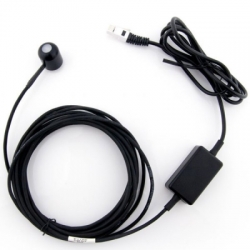
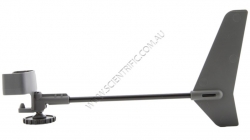



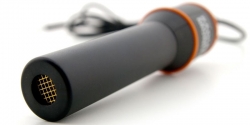

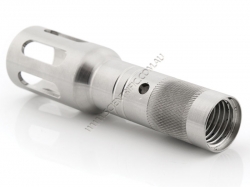
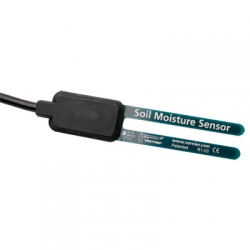
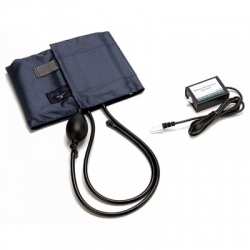

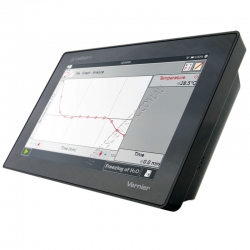
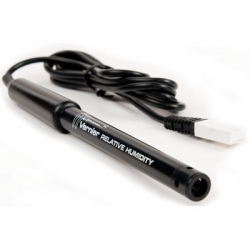
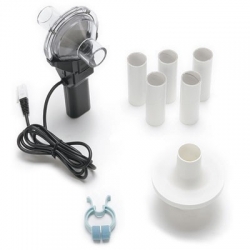
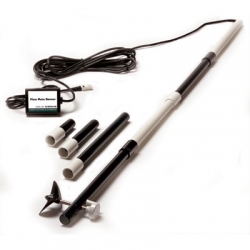
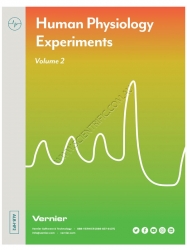

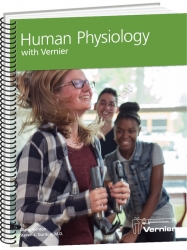

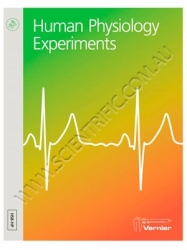

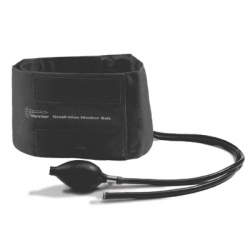
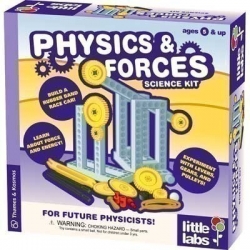
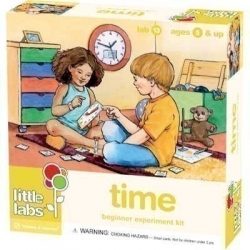
197 results found for 'Science'. Prev |1|2|3|4|5|6|7|8 | Next | View 100 per page
Low relevance matches: 10 other results may be of interest to you. Show low relevance matches
Curriculum resources related to 'Science'
ACSSU184 Year 10 Biological SciencesDNA - The transmission of heritable characteristics from one generation to the next involves DNA and genes ACSSU185 Year 10 Biological Sciences
Evolution - The theory of evolution by natural selection explains the diversity of living things and is supported by a range of scientific evidence ACSSU004 Foundation Earth and Space Sciences
Weather and Climate - Daily and seasonal changes in our environment, including the weather, affect everyday life ACSSU002 Foundation Biological Sciences
Living Things - Living things have basic needs, including food and water ACSSU005 Foundation Physical Sciences
Forces and Moving - The way objects move depends on a variety of factors including their size and shape ACSSU017 Year 1 Biological Sciences
Living Things - Living things have a variety of external features ACSSU019 Year 1 Earth and Space Sciences
Weather and Climate - Observable changes occur in the sky and landscape ACSSU020 Year 1 Physical Sciences
Light and Sound - Light and sound are produced by a range of sources and can be sensed ACSSU030 Year 2 Biological Sciences
Life Cycles - Living things grow, change and have offspring similar to themselves ACSSU031 Year 2 Chemical Sciences
Materials - Different materials can be combined, including by mixing, for a particular purpose ACSSU032 Year 2 Earth and Space Sciences
Water - Earth’s resources, including water, are used in a variety of ways ACSSU033 Year 2 Physical Sciences
Forces and Moving - A push or a pull affects how an object moves or changes shape ACSSU043 Year 5 Biological Sciences
Adaptations - Living things have structural features and adaptations that help them to survive in their environment ACSSU044 Year 3 Biological Sciences
Living Things - Living things can be grouped on the basis of observable features and can be distinguished from nonliving ACSSU046 Year 3 Chemical Sciences
Solids Liquids Gases - A change of state between solid and liquid can be caused by adding or removing heat ACSSU048 Year 3 Earth and Space Sciences
Earth Moon Sun - Earth’s rotation on its axis causes regular changes, including night and day ACSSU049 Year 3 Physical Sciences
Heat - Heat can be produced in many ways and can move from one object to another ACSSU072 Year 4 Physical Sciences
Life Cycles - Living things have life cycles ACSSU073 Year 4 Biological Sciences
Animal Survival - Living things, including plants and animals, depend on each other and the environment to survive ACSSU074 Year 4 Chemical Sciences
Materials - Natural and processed materials have a range of physical properties; These properties can influence their use ACSSU075 Year 4 Earth and Space Sciences
Earth Changes - Sudden geological changes or extreme weather conditions can affect Earth’s surface ACSSU076 Year 4 Physical Sciences
Forces and Moving - Forces can be exerted by one object on another through direct contact or from a distance ACSSU077 Year 5 Chemical Sciences
Solids Liquids Gases - Solids, liquids and gases have different observable properties and behave in different ways ACSSU078 Year 5 Earth and Space Sciences
Earth Moon Sun - The Earth is part of a system of planets orbiting around a star (the sun) ACSSU080 Year 5 Physical Sciences
Light and Sound - Light from a source forms shadows and can be absorbed, reflected and refracted ACSSU094 Year 6 Biological Sciences
Adaptations - The growth and survival of living things are affected by the physical conditions of their environment ACSSU095 Year 6 Chemical Sciences
Chemical Changes - Changes to materials can be reversible, such as melting, freezing, evaporating; or irreversible, such as burning and rusting ACSSU096 Year 6 Earth and Space Sciences
Earth Changes - Sudden geological changes or extreme weather conditions can affect Earth’s surface ACSSU097 Year 6 Physical Sciences
Electrical Circuits - Electrical energy can be transferred and transformed in electrical circuits and can be generated from a range of sources ACSSU111 Year 7 Biological Sciences
Classification - Classification helps organise the diverse group of organisms ACSSU112 Year 7 Biological Sciences
Food webs - Interactions between organisms, including the effects of human activities can be represented by food chains and food webs ACSSU113 Year 7 Chemical Sciences
Separating Mixtures - Mixtures, including solutions, contain a combination of pure substances that can be separated using a range of techniques ACSSU115 Year 7 Earth and Space Sciences
Earth Moon Sun - Predictable phenomena on Earth, including seasons and eclipses, are caused by the relative positions of the sun, Earth and the moon ACSSU116 Year 7 Earth and Space Sciences
Earth Resources - Some of Earth’s resources are renewable, but others are non renewable ACSSU117 Year 7 Physical Sciences
Forces and Machines - Change to an object’s motion is caused by unbalanced forces, including Earth’s gravitational attraction, acting on the object ACSSU149 Year 8 Biological Sciences
Cells - Cells are the basic units of living things and have specialised structures and functions ACSSU150 Year 8 Biological Sciences
Organ Systems - Multi-cellular organisms contain systems of organs that carry out specialised functions that enable them to survive and reproduce ACSSU151 Year 8 Chemical Sciences
Matter and Particles - The properties of the different states of matter can be explained in terms of the motion and arrangement of particles ACSSU152 Year 8 Chemical Sciences
Matter and Particles - Differences between elements, compounds and mixtures can be described at a particle level ACSSU153 Year 8 Earth and Space Sciences
Rocks and Minerals - Sedimentary, igneous and metamorphic rocks contain minerals and are formed by processes that occur within Earth over a variety of timescales ACSSU155 Year 8 Physical Sciences
Energy Forms - Energy appears in different forms, including movement (kinetic energy), heat and potential energy, and energy transformations and transfers cause change within systems ACSSU175 Year 9 Biological Sciences
Organ Systems - Multi-cellular organisms rely on coordinated and interdependent internal systems to respond to changes to their environment ACSSU176 Year 9 Biological Sciences
Ecology - Ecosystems consist of communities of interdependent organisms and abiotic components of the environment; matter and energy flow through these systems ACSSU177 Year 9 Chemical Sciences
Atomic Models - All matter is made of atoms which are composed of protons, neutrons and electrons; natural radioactivity arises from the decay of nuclei in atoms ACSSU178 Year 9 Chemical Sciences
Chemical Reactions - Chemical reactions involve rearranging atoms to form new substances; during a chemical reaction mass is not created or destroyed ACSSU179 Year 9 Chemical Sciences
Chemical Reactions - Chemical reactions, including combustion and the reactions of acids, are important in both non-living and living systems and involve energy transfer ACSSU225 Year 8 Chemical Sciences
Chemical Reactions - Chemical change involves substances reacting to form new substances ACSSU180 Year 9 Earth and Space Sciences
Plate Tectonics - The theory of plate tectonics explains global patterns of geological activity and continental movement ACSSU182 Year 9 Physical Sciences
Energy Transfer - Energy transfer through different mediums can be explained using wave and particle models ACSSU186 Year 10 Chemical Sciences
Periodic table - The atomic structure and properties of elements are used to organise them in the Periodic Table ACSSU187 Year 10 Chemical Sciences
Chemical Reactions - Different types of chemical reactions are used to produce a range of products and can occur at different rates ACSSU188 Year 10 Earth and Space Sciences
Universe - The universe contains features including galaxies, stars and solar systems and the Big Bang theory can be used to explain the origin the universe ACSSU189 Year 10 Earth and Space Sciences
Global Systems - Global systems, including the carbon cycle, rely on interactions involving the biosphere, lithosphere, hydrosphere and atmosphere ACSSU190 Year 10 Physical Sciences
Energy Conservation - Energy conservation in a system can be explained by describing energy transfers and transformations ACSSU211 Year 1 Biological Sciences
Animal Survival - Living things live in different places where their needs are met ACSSU219 Year 6 Physical Sciences
Alternative Energies - Energy from a variety of sources can be used to generate electricity ACSSU229 Year 10 Physical Sciences
Forces and Motion - The motion of objects can be described and predicted using the laws of physics
Products related to 'Science'

Vernier Go Direct Soil Moisture Sensor
VERNIER GO DIRECT SOIL MOISTURE SENSOR
Vernier's Go Direct Soil Moisture Sensor uses capacitance to measure the water content of soil by measuring the dielectric permittivity of the soil, which is a function of the water content.
Simply insert this rugged sensor into ...
Order code: GDX-SM

Vernier Pyranometer - Solar Power Meter
VERNIER PYRANOMETER
Vernier's Pyranometer measures the power of electromagnetic radiation. It is sensitive to near infrared, visible and UV radiation, where 90% of solar energy is concentrated. It reads in watts per square metre so it is great for experiments with solar c...
Order code: PYR-BTA

Vernier Go Direct Weather Vane
VERNIER GO DIRECT WEATHER VANE
The Vernier Go Direct Weather Vane accessory is essential for reporting wind direction using the
GDX-WTHR Vernier Go Direct Weather Sensor. Purchase the Vernier Go Direct Weather Sensor...
Order code: WTHR-VANE

Vernier Goniometer Replacement Arms
VERNIER GONIOMETER REPLACEMENT ARMS
A set of three replacement arms for the GNM-BTA Vernier Goniometer:
• 300mm flexible joint arm
• 250mm flexible joint arm
• 200mm flexible joint arm
Order code: GNM-ARMS

Vernier Goniometer
VERNIER GONIOMETER
The Vernier Goniometer measures the angle of a joint such as the knee or elbow and can be used to analyze the range of motion of a limb during different types of physical activity.
• A set of elastic straps are used to secure the sensor to the subjec...
Order code: GNM-BTA

Vernier Goniometer Replacement Straps
VERNIER GONIOMETER REPLACEMENT STRAPS
A set of replacement straps for the Goniometer that includes:
• 2x 600mm elastic hook-and-loop straps
• 2x 600mm elastic hook-and-loop straps
Order code: GNM-STRAPS

Vernier Radiation Monitor
VERNIER RADIATION MONITOR
Use the Vernier Radiation Monitor to explore radiation statistics, measure the rate of nuclear decay and monitor radon progeny.
This easy-to-use sensor consists of a Geiger-Mueller tube mounted in a small rugged plastic case. A thin window pro...
Order code: VRM-BTD

Vernier Optical DO Probe Replacement Cap
VERNIER OPTICAL DO PROBE REPLACEMENT CAP
This is a replacement cap for the Vernier Optical DO Probe. The cap will need to be replaced every few years. Each cap is supplied with a unique calibration code on a microSD card.
Order code: ODO-CAP

Vernier Optical DO Probe Metal Guard
VERNIER OPTICAL DO PROBE METAL GUARD
The Optical DO Probe metal guard protects the Vernier Optical DO Probe cap when taking measurements in the field and helps weigh down the probe when submerged.
Order code: ODO-GRD

Vernier Soil Moisture Sensor
VERNIER SOIL MOISTURE SENSOR
The Soil Moisture Sensor uses capacitance to measure the water content of soil by measuring the dielectric permittivity of the soil - a function of the water content. Simply insert this rugged sensor into the soil to be tested, and the volumet...
Order code: SMS-BTA

Vernier Blood Pressure Sensor
VERNIER BLOOD PRESSURE SENSOR
Vernier's Blood Pressure Sensor is a non-invasive sensor designed to measure human blood pressure. It can be used to measure systolic and diastolic blood pressure utilising the oscillometric technique. The sensor includes a standard adult siz...
Order code: BPS-BTA

Vernier Exercise Heart Rate Monitor
Currently unavailable, we are awaiting confirmation it complies with Button Battery safety requirements.
VERNIER EXERCISE HEART RATE MONITOR Vernier's Exercise Heart Rate Monitor is an excellent hands-free option for continuously monitoring heart rate before, during and after exercise. Using the chest strap, data are wirelessly transmitted to a Vernier interface using the He... Order code: EHR-BTA
VERNIER EXERCISE HEART RATE MONITOR Vernier's Exercise Heart Rate Monitor is an excellent hands-free option for continuously monitoring heart rate before, during and after exercise. Using the chest strap, data are wirelessly transmitted to a Vernier interface using the He... Order code: EHR-BTA

Vernier LabQuest 3 Middle School Package
VERNIER LABQUEST 3 MIDDLE SCHOOL PACKAGE
Designed for use by a group of 2-4 students, the Vernier LabQuest 3 Middle School Package includes:
• LABQ3 Vernier LabQuest 3 Interface
•
Order code: LQ3-MS-DX

Vernier Relative Humidity Sensor
VERNIER RELATIVE HUMIDITY SENSOR
Vernier's Relative Humidity Sensor contains an integrated circuit that can be used to monitor relative humidity
over the range 0 to 95% (± 5%). The sensor has applications in weather studies, monitoring greenhouses
or for determining d...
Order code: RH-BTA

Vernier Spirometer
VERNIER SPIROMETER
The Vernier Spirometer is designed to make human respiratory measurements at rest and during moderate activity. Use it to perform a variety of experiments related to air flow and lung volume. The removable flow head (22mm ID/30mm OD) makes it easy to cl...
Order code: SPR-BTA

Vernier Flow Rate Sensor
VERNIER FLOW RATE SENSOR
Vernier's Flow Rate Sensor allows students to easily measure the velocity of water when studying the discharge, flow patterns and sediment transport of a creek or river.
The Flow Rate Sensor includes 3 riser rods which enable the impeller to b...
Order code: FLO-BTA

Vernier Human Physiology Experiments Volume 2
VERNIER HUMAN PHYSIOLOGY EXPERIMENTS VOLUME 2
Vernier's Human Physiology Experiments Volume 2 is an expansion of HSB-HP Human Physiology Experiments to encourage students to investigate the physiology of the cardiovascular, muscular, respiratory and nervous systems.
T...
Order code: ALB-HP2

Vernier Human Physiology Experiments Volume 2 - Electronic
VERNIER HUMAN PHYSIOLOGY EXPERIMENTS VOLUME 2 ELECTRONIC
This electronic version of Vernier's Human Physiology Experiments Volume 2 is an expansion of HSB-HP Human Physiology Experiments to encourage students to investigate the physiology of the cardiovascular, muscular, ...
Order code: ALB-HP2-E

Human Physiology with Vernier
HUMAN PHYSIOLOGY WITH VERNIER
Human Physiology with Vernier is a lab book containing 24 experiments designed to encourage students to think about the physiology of various human organ systems by measuring the activity of the upper respiratory tract, the lungs, the heart, ...
Order code: HP-A

Human Physiology with Vernier - Electronic Version
HUMAN PHYSIOLOGY WITH VERNIER - ELECTRONIC
Human Physiology with Vernier is a lab book containing 24 experiments designed to encourage students to think about the physiology of various human organ systems by measuring the activity of the upper respiratory tract, the lungs...
Order code: HP-A-E

Vernier Human Physiology Experiments
VERNIER HUMAN PHYSIOLOGY EXPERIMENTS
The experiments in Vernier Human Physiology Experiments encourage students to investigate the physiology of the cardiac, muscular, respiratory, vascular and nervous systems. Experiment setup is minimal and students are collecting data ...
Order code: HSB-HP

Vernier Human Physiology Experiments - Electronic Version
VERNIER HUMAN PHYSIOLOGY EXPERIMENTS - ELECTRONIC
The experiments in Vernier Human Physiology Experiments encourage students to investigate the physiology of the cardiac, muscular, respiratory, vascular and nervous systems. Experiment setup is minimal and students are col...
Order code: HSB-HP-E

Vernier Respiration Monitor Belt (requires GPS-BTA)
VERNIER RESPIRATION MONITOR BELT
Vernier's Respiration Monitor Belt is used with the Vernier Gas Pressure Sensor to measure human respiration. Simply strap the belt around the chest, pump air into the belt with the hand bulb and monitor the pressure associated with the ex...
Order code: RMB

Little Labs: Physics and Forces
A great little kit in the Little Labs line from Thames and Kosmos. Learn about mechanics and physics by building simple machines such as levers, gears and pulleys. Discover force and motion. 20 page colour guidebook.
For ages 5 and up.
Order code: 602123

Little Labs: Time
Another kit in the Little Labs line from Thames and Kosmos. The measurement of time is crucial to science. Learn how to tell time and how analogue clocks, digital clocks, sundials and hourglasses work. With a 16-page colour guidebook.
For ages 5 and up.
Order code: 606015
197 results found for 'Science'. Prev |1|2|3|4|5|6|7|8 | Next | View 100 per page



 ,
,